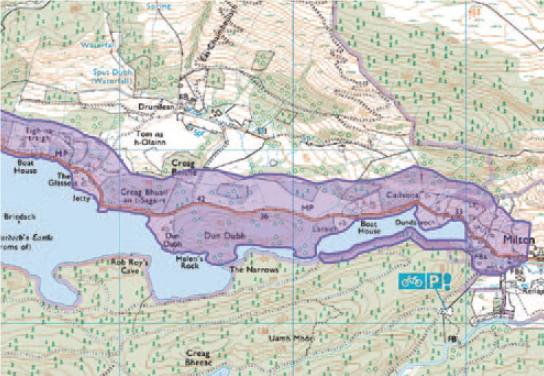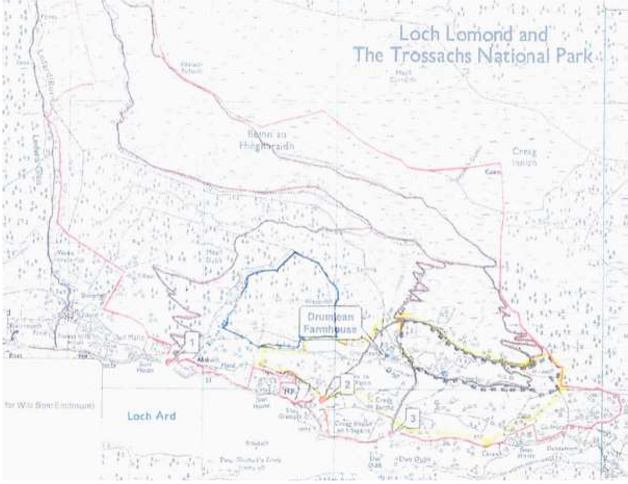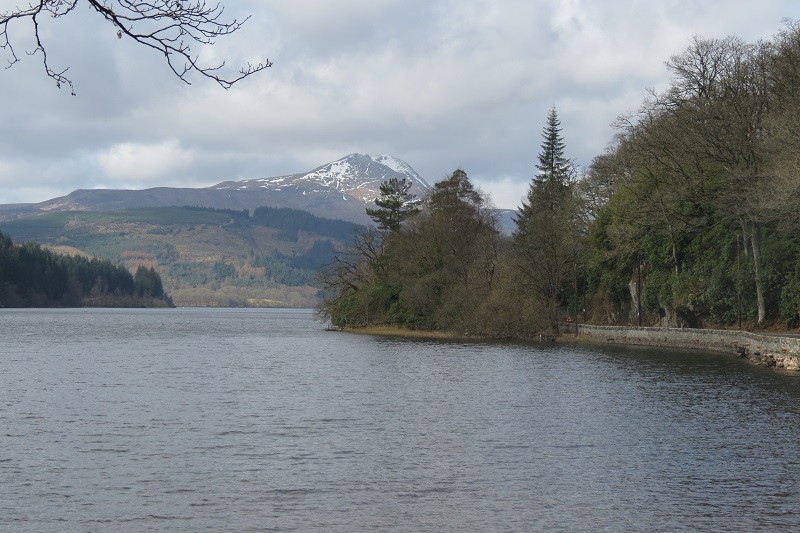
The response of many outdoor recreationists to the Drumlean decision (see here) was to highlight the hyprocrisy of the LLTNPA who while defending access rights with the one hand were undermining them with the other. These contradictions in the LLTNPA’s position were nicely exposed in an article in TGO magazine (see here). I believe people were right to do so but, because the Drumlean decision is so important for access rights in Scotland, chose to focus on the positives in my last post – and again well done the LLTNPA access team. This post will take a look at how the LLTNPA’s contestation of the Drumlean case fits with their promulgation of camping byelaws.
In the same year, 2013, as the Loch Lomond and Trossachs National Park’s access team were contesting the Drumlean Estate’s appeal to the Sheriff Court, the then Park Convener, Linda McKay, gave a presentation to the Land Reform Review Group proposing that ALL roadside camping across the whole of Scotland should be removed from access rights (see here). While strangely neither the LLTNPA nor the Land Reform Review Group archives appear to have any copy of that presentation, we do know from the Report they published that the LRRG firmly rejected the proposal. It appears that Linda McKay, however, was not prepared to accept no as an answer because soon after this rebuff the LLTNPA started in secret to develop their own proposals to ban camping by developing and extending the east Loch Lomond camping byelaws which had originally been agreed as a temporary measure.
And guess what? The camping byelaws now encompass part of the Drumlean estate! The irony, one part of the LLTNPA taking on a landowner to secure access rights and another part of the LLTNPA undermining those very same rights (and its important to stress here that to my knowledge the LLTNPA’s access team were NOT involved in the development of the camping byelaw proposals).

When I first went to take a look at Strathard from a camping perspective a couple of years ago I could not understand how there could any justification whatsoever for a camping ban along the loch shore here. The reason for this is illustrated by the photo below:

There is almost nowhere where its possible to camp until you get to the fields below Ledard Farm, owned by Fergus Wood, the former Councillor and Board Member, who submitted and then withdrew a planning application for a campsite last year (see here). At the time I did not realise that most of the land here was owned by the Drumlean Estate and that access to it had been prevented by high fences and locked gates. So, although it was almost physically impossible along most of the shoreline and road – apart from a couple of pebbly beaches used by anglers – the LLTNPA still decided to ban camping here.
There was no justification for this and it provides further evidence that the LLTNPA’s claims on the programme on the Battle for Scotland’s Countryside that the byelaws were needed because of the “sheer volume of campers” (see here) are total nonsense. And its worth noting here that the Court of Session recorded that the Drumlean estate’s case for keeping its gates locked was not to exclude people because of anti-social behaviour but rather, Dr Brach claimed, to protect them from animals on the estate. So, the other claimed reason for the byelaws, anti-social behaviour “by a tiny minority”, did not apply here either.
All of this makes the comments by the LLTNPA Chief Executive, Gordon Watson, in the news release (see here) the Park issued after the Drumlean judgement totally hyprocritical:
“The National Park Authority strongly believes in its duty to uphold the landmark right to responsible access granted to the public by the Land Reform (Scotland) Act 2003.
“In our role as an Access Authority we work in partnership with communities and land managers across the National Park to ensure public access rights are protected and upheld. The vast majority of landowners within the National Park, from small land holdings to large estates, respect the provisions and responsibilities that come with the Land Reform Act and support our many projects to improve access.”
Note that Mr Watson does not even understand the law, he talks about “the landmark right to responsible access” when even the original Sheriff in the Drumlean case, who rejected the LLTNPA’s attempt to use its legal powers to open up the land, noted it was a right of access – which their lordships then referred to in their judgement as being colloquially known as the “right to roam” – and the question of responsibility of both visitors and landowners are set out in separate clauses in the legislation. Note too Mr Watson refers to working with land managers and local communities on access but says nothing about working with organisations representing recreational interests. That says it all and is why the LLTNPA has got itself in such a mess.
Instead of this rubbish thinking, the Drumlean case should cause the LLTNPA to reflect on how, by creating camping byelaws, they have handed back power to landowners to ban certain activities covered by access rights and have this enforced at public expense. The LLTNPA claimed when consulting on their Your Park proposals that they wished to create new facilities to support campers but have lamentably failed to do so. Part of the reason for this is that with camping banned there is absolutely no reason for landowners to co-operate with the provision of camping infrastructure unless there is money to be made. Imagine the reaction of the Drumlean Estate if the LLTNPA approached them and asked permission for a camping permit area behind all the fences and within the camping management zone on their land. Imagine too the reaction of Fergus Wood, if he too was asked to provide a permit area rather than a fully paying campsite at Ledard Farm.
There is good reason therefore for the LLTNPA to use the Drumlean judgement as an opportunity ot reflect on their own hyprocrisy and how this is undermining their claims to still be promoting public enjoyment of the countryside. I suspect, however, that the LLTNPA does not have the will do this and as a consequence the stain on our National Park’s reputation will continue to spread. The tragedy is that if the LLTNPA was prepared to work in real partnership – rather than pursue their previous convener’s agenda – they could have become exemplars of how to support access rights and Drumlean would then have been the feather in their cap.